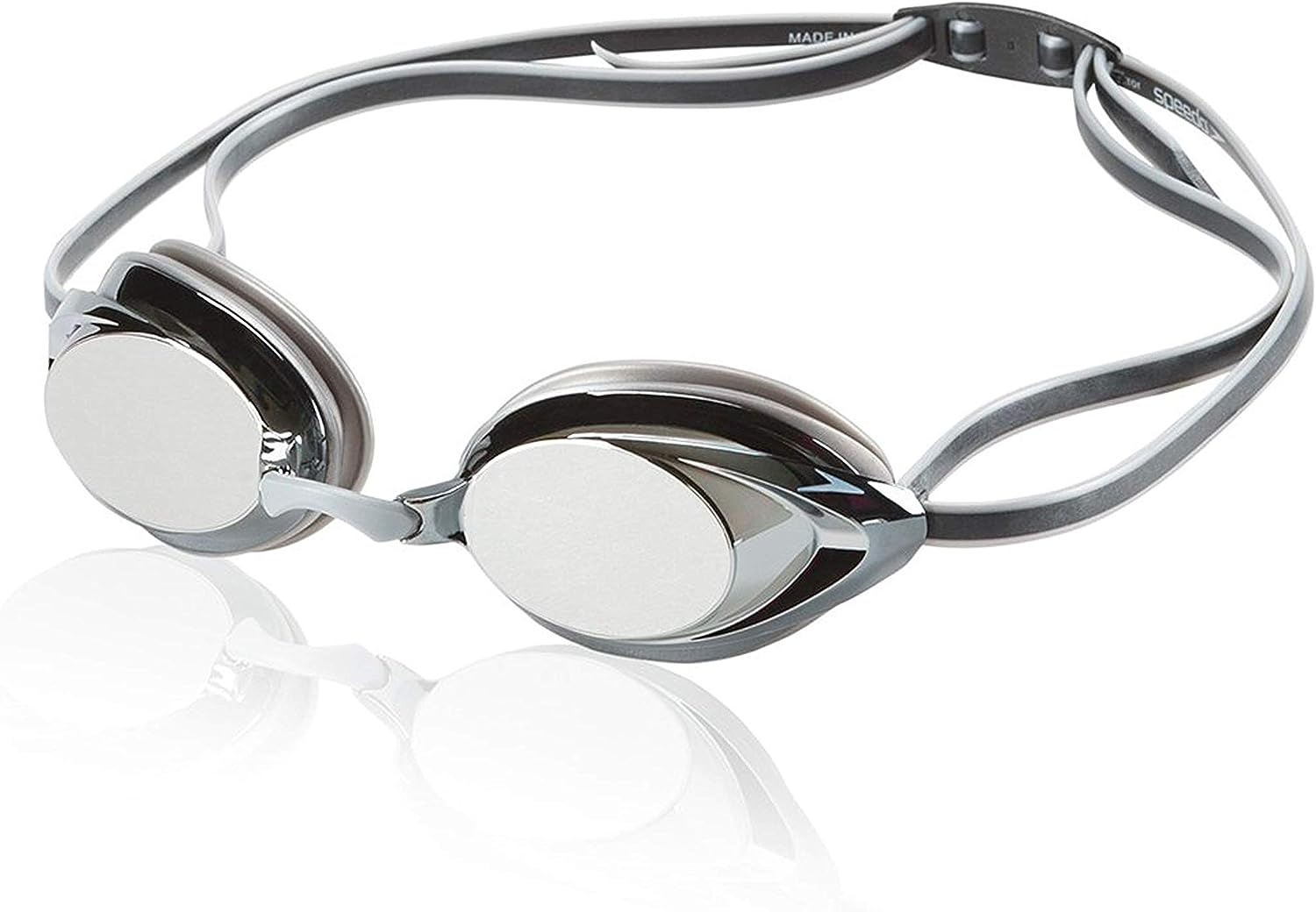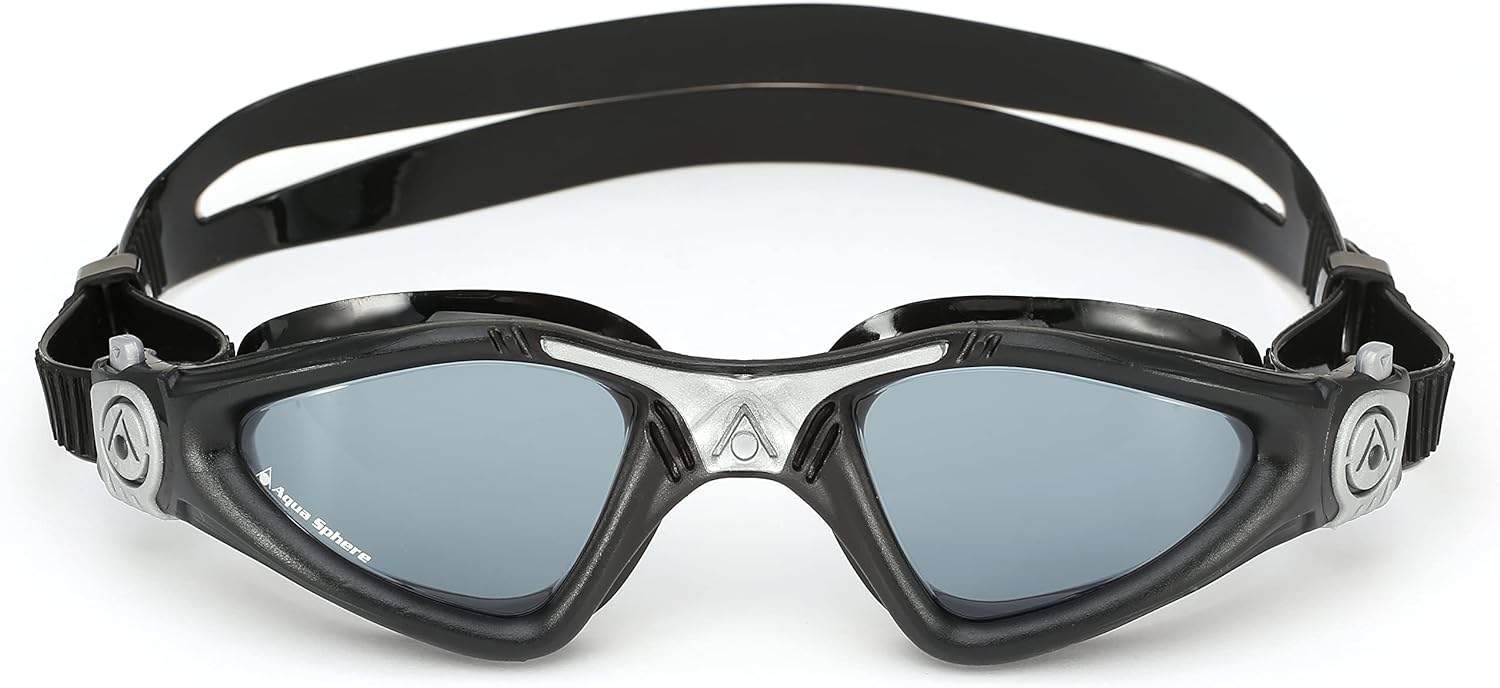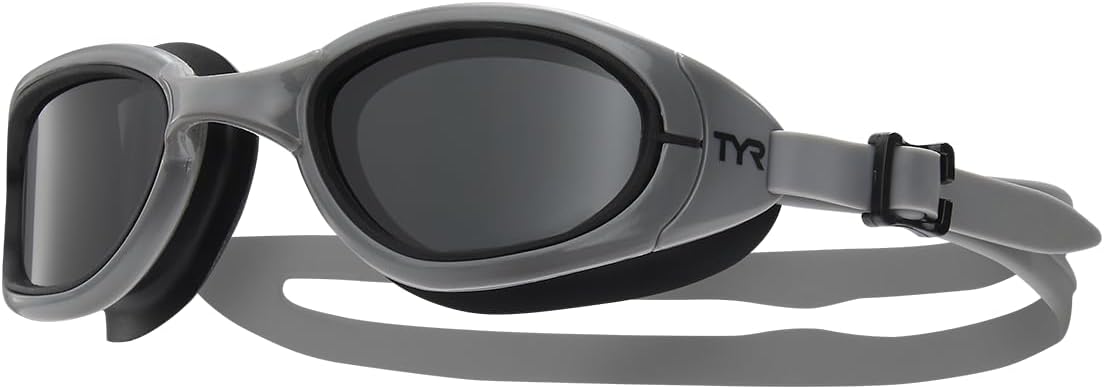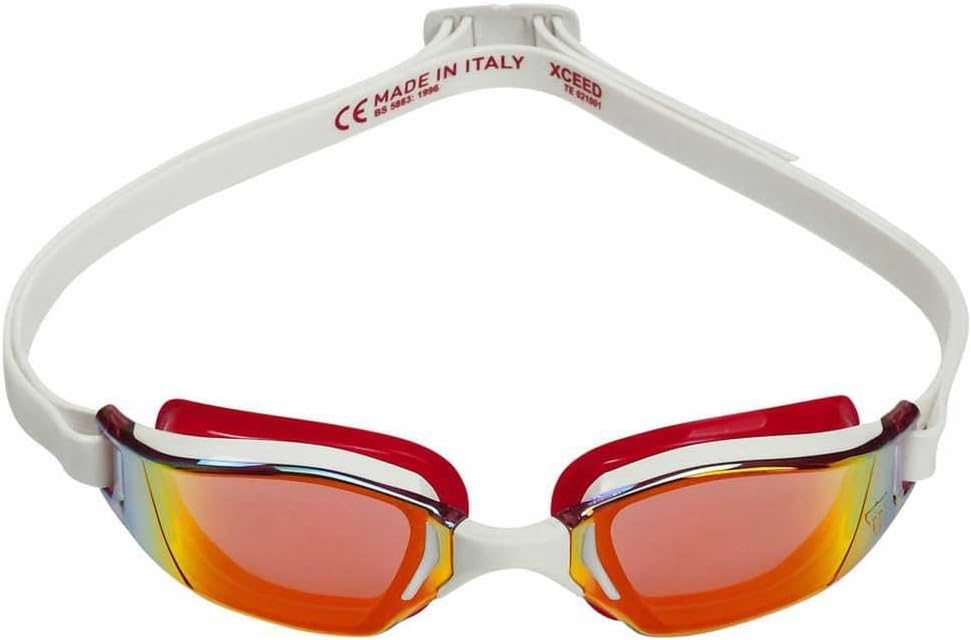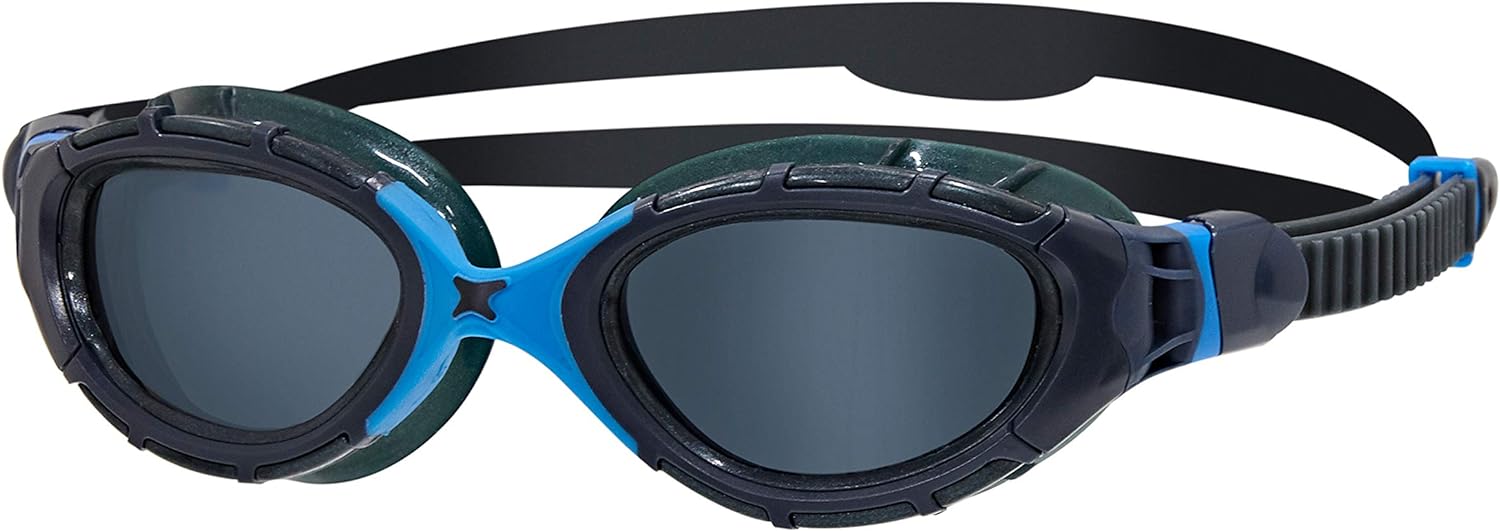Find the Best Swim Goggles: A Simple Guide
Swim goggles help you see clearly underwater and keep your eyes safe. At lishtop.com, we’re here to help you pick the best pair for you. Whether you swim for fun, exercise, or competitions, the right goggles can make a big difference. We’ll show you why goggles are important, how to pick the right ones, and which brands and products are the best. Let’s get started on finding the perfect pair of swim goggles for your water adventures.
Why Swim Goggles?
Swim goggles are more than just a swimming accessory. They are an essential part of your swim gear whether you’re in a pool, a lake, or the ocean. Let’s dive into why swim goggles are so important:
👉 Eye Protection
Swim goggles provide a protective barrier between your eyes and the water, keeping out harmful elements. Chlorine in pool water, salt in the ocean, and bacteria in natural bodies of water can irritate or even harm your eyes. Goggles keep these irritants away, helping you swim comfortably for longer.
👉 Clear Vision Underwater
Seeing clearly underwater isn’t just cool; it’s practical. Goggles help you navigate the pool, avoid bumping into other swimmers, and swim straight lines in open water. For competitive swimmers, clear vision is crucial for spotting walls and timing turns perfectly.
👉 UV Protection
Many swim goggles come with UV protection, shielding your eyes from the sun’s harmful ultraviolet rays. This is especially important for outdoor swimming, where prolonged exposure to sunlight can damage your eyes.
👉 Comfort and Focus
Goggles can help you avoid discomfort and distractions. Without them, you might struggle with water getting into your eyes, causing you to stop and wipe your eyes frequently. Goggles let you focus on your swimming technique and enjoyment without interruption.
👉 Enhanced Performance
For those who swim competitively or are working on improving their performance, goggles are a game-changer. They reduce drag, help you maintain proper alignment, and allow you to see the clock and other swimmers clearly. This can be the difference between a good swim and a great one.
Selecting the perfect pair of swim goggles can greatly impact your swimming experience. Here’s a detailed guide to help you make the best choice:
1. Fit and Comfort
Seal:
The most crucial aspect of fit is the seal. Goggles should sit snugly around your eyes without causing discomfort. A good seal prevents water from leaking in without being so tight that it leaves marks around your eyes.
Nose Bridge:
Since faces vary in shape and size, finding goggles with an adjustable nose bridge can ensure a better fit. Some goggles come with interchangeable nose pieces to accommodate different bridge widths.
Straps:
Goggle straps should be easy to adjust and stay in place without slipping. Silicone straps are durable and less likely to stretch out or snap.
2. Lens Type and Visibility
Clear vs. Tinted Lenses:
Choose clear lenses for indoor swimming or low-light conditions to ensure maximum visibility. Tinted lenses are beneficial in bright outdoor settings, reducing glare and improving comfort.
UV Protection:
If you swim outdoors, look for goggles with UV protection to shield your eyes from the sun’s harmful rays.
Anti-fog Coating:
To maintain clear vision throughout your swim, opt for goggles with an anti-fog coating. Remember, touching the inside of the lenses can wear this coating off, so handle them carefully.
3. Goggle Style
Racing Goggles:
These are designed with a low profile to minimize drag, making them a great choice for competitive swimmers. They may be less comfortable for long sessions due to their tight fit.
Training Goggles:
Built for comfort and durability, training goggles are suitable for regular use. They usually have a more extensive seal and softer frame for a comfortable fit over longer periods.
Open Water Goggles:
If you swim in open water, consider goggles with a wider field of vision. These goggles allow you to see more around you, helping with navigation and safety.
4. Additional Features
Prescription Lenses:
Swimmers who wear glasses can opt for prescription goggles, which are custom-made to correct vision underwater.
Easy Adjustment:
Look for goggles with easy-to-adjust straps and frames. This feature is particularly useful in open water swims and triathlons, where quick adjustments are necessary.
5. Price vs. Quality
While it’s tempting to go for the cheapest option, investing in a quality pair of goggles can improve your swimming experience and last longer. High-quality materials and construction can withstand regular use and exposure to chlorine or saltwater.
Taking the time to choose the right swim goggles can make your swims more enjoyable and effective. Consider what’s most important to you, whether it’s comfort, clarity, or performance, and select a pair that meets your needs. Remember, the best goggles are the ones that you don’t notice while you’re swimming, allowing you to focus on your stroke, speed, and the pure joy of being in the water.
6. Brand Reputation and Reviews
Consider purchasing from reputable brands known for their quality swim gear. Reading reviews from other swimmers can also provide insight into the performance and durability of different models.
Top Brands and Products: Our Detailed Reviews
Finding the perfect pair of swim goggles can significantly enhance your swimming experience. Here’s a closer look at five highly recommended products from some of the best brands in the market:
#1. Speedo Vanquisher 2.0
Speedo is synonymous with high-quality swimwear and accessories. Their products are designed for all levels of swimmers, from beginners to Olympic athletes.
The Speedo Vanquisher 2.0 is a versatile goggle that suits competitive and recreational swimmers alike. Its low-profile design reduces drag, making it ideal for races. The Vanquisher 2.0 features dual straps for a secure fit, interchangeable nose pieces to accommodate different face shapes, and anti-fog, UV-protective lenses. The silicone seals are comfortable, ensuring a tight seal without too much pressure.
👍 Pros:
- Excellent visibility and UV protection
- Customizable fit with interchangeable nose pieces
- Durable, with a snug, comfortable seal
👎 Cons:
- Some swimmers might find the low-profile design slightly less comfortable for long-duration swims.
#2. Aqua Sphere Kayenne
Aqua Sphere is known for its focus on comfort and visibility, making its goggles popular among fitness and recreational swimmers, especially in open water.
The Aqua Sphere Kayenne stands out for its oversized, curved lenses, which offer a wide field of vision, a critical feature for open-water swimmers. These goggles boast a comfortable, leak-resistant silicone skirt and a stabilizing nose bridge that keeps them in place during vigorous movements. The one-touch, Quick-Fit Buckle allows for easy adjustments, even while wearing.
👍 Pros:
- Exceptional 180-degree visibility
- Easy to adjust on the fly
- Comfortable for long periods
👎 Cons:
- Bulkier than racing goggles, which might not appeal to all swimmers.
#3. TYR Special Ops 2.0 Polarized
TYR is a leader in swim and triathlon gear, known for innovative designs that cater to elite athletes’ needs.
The TYR Special Ops 2.0 Polarized goggles are designed with the outdoor swimmer in mind. The polarized lenses cut glare, which is invaluable in bright, sunny conditions, making them perfect for open water and triathlon training. They also feature wide peripheral silicone gaskets for comfort and durability, and a split strap for secure placement.
👍 Pros:
- Polarized lenses for excellent glare reduction
- Wide peripheral vision
- Comfortable and secure fit
👎 Cons:
- May not fit as well on smaller faces due to the broader design.
#4. MP Michael Phelps XCEED
Developed in collaboration with Michael Phelps, the most decorated Olympian of all time, MP swim gear is engineered for top performance. needs.
The MP Michael Phelps XCEED goggles are designed for competitive swimmers seeking every advantage. They offer a streamlined, low-profile design, with curved lenses for better hydrodynamics and expanded field of vision. The Exo-Core technology combines a firm outer structure with a soft inner to ensure durability and comfort. The anti-fog treated lenses and easy-adjust head strap make them practical for intense training sessions and races.
👍 Pros:
- Superior visibility and hydrodynamics
- Durable and comfortable for competitive use
- Sleek, attractive design
👎 Cons:
- Premium price point compared to other models.
#5. Zoggs Predator Flex
Zoggs specializes in high-quality swim equipment that offers innovative features like frame flexibility and lens technology for enhanced vision and comfort.
The Zoggs Predator Flex goggles are known for their unique 4 Flexpoint Technology, which allows the frame to flex to the face’s contours for a super comfortable fit. They’re excellent for open water and pool swimmers who prioritize comfort and a panoramic field of vision. UV protection and anti-fog lenses come standard, and the split strap design ensures they stay put during any activity.
👍 Pros:
- Highly flexible frame for a perfect fit
- Wide field of vision with minimal distortion
- Strong UV protection and anti-fog features
👎 Cons:
- Some users report that the anti-fog coating wears off over time.
Understanding Goggle Lens Technology
Swim goggles have evolved significantly, with lens technology playing a crucial role in enhancing swimmers’ vision and comfort underwater. Different lens types and technologies cater to various swimming conditions, preferences, and needs. Here’s a breakdown of key goggle lens technologies to help you choose the perfect pair for your swimming adventures.
Polarized vs. Photochromic Lenses
Polarized Lenses: These lenses reduce glare from the sun, making them ideal for outdoor swimming. Glare can be a significant issue when swimming in open water, as it can impair your ability to see clearly. Polarized lenses filter out the light reflected off surfaces like water, reducing eye strain and improving visibility.
Photochromic Lenses: Photochromic lenses adapt to changing light conditions by automatically adjusting their tint. In bright sunlight, they darken to protect your eyes, and in lower light conditions, they become lighter, ensuring optimal visibility at all times. These lenses are perfect for swimmers who move between indoor and outdoor environments or who swim at different times of the day.
Anti-Fog Technology
Fogging is a common issue with swim goggles, caused by the temperature difference between the water and your body heat. Anti-fog technology involves a thin coating on the inside of the lens that prevents the formation of condensation. Proper care is essential to maintain the anti-fog coating:
- Avoid rubbing the inside of the lenses, as this can wear away the anti-fog coating.
- Rinse your goggles in cold water after use and let them air dry.
- If the coating starts to wear off, anti-fog sprays or solutions can be used to prolong your goggles’ life.
Optical Grade Materials
The material of the goggle lens affects clarity, durability, and safety. Most high-quality swim goggles use polycarbonate lenses due to their impact resistance and optical clarity. Polycarbonate is also lightweight, providing comfort even during long swimming sessions. Look for lenses made from optical grade materials to ensure that your vision underwater is as clear and undistorted as possible.
UV Protection
Exposure to ultraviolet (UV) rays can harm your eyes, leading to conditions like photokeratitis (sunburn of the cornea). Many swim goggles offer UV protection, blocking harmful UVA and UVB rays. This feature is particularly important for outdoor swimmers but can also benefit indoor swimmers exposed to UV rays through windows.
Lens Color and Visibility
The color of your goggle lenses can enhance visibility under various swimming conditions:
- Clear Lenses: Ideal for indoor swimming or low-light conditions, providing maximum visibility.
- Colored Lenses: Blue, pink, and amber lenses can enhance contrast and depth perception, useful in both indoor and outdoor settings.
- Mirrored Lenses: Reflect light away from the eyes, reducing brightness and glare. Best suited for outdoor swimming in sunny conditions.
Understanding the technology behind swim goggle lenses allows you to make an informed decision based on where and when you swim, your comfort preferences, and any specific vision needs you may have. With the right pair of goggles, you can enjoy a clear, comfortable swimming experience in any environment.
Health and Safety Considerations
While swim goggles are often chosen for comfort and clarity underwater, they also play a crucial role in protecting your eye health and safety. Whether you’re swimming in a chlorinated pool, a salty ocean, or a fresh lake, understanding the health and safety implications can help you make informed choices about your swim gear.
Protecting Against Eye Infections
Swimming exposes your eyes to various irritants and pathogens. Chlorine in pools can cause eye redness and irritation, while natural bodies of water may contain bacteria, viruses, or parasites that can lead to infections such as conjunctivitis (pink eye) or more serious conditions like Acanthamoeba keratitis.
Wearing swim goggles forms a protective barrier that minimizes your eyes’ exposure to these harmful agents, reducing the risk of irritation and infection. It’s essential to choose goggles with a good seal to ensure the best protection.
Swimming with Contact Lenses
Swimmers with vision impairments may be tempted to wear contact lenses under their goggles, but this practice can increase the risk of eye infections. Contact lenses can trap bacteria and other pathogens against your eye, potentially leading to severe infections.
If you need vision correction while swimming, consider investing in prescription swim goggles. These goggles are specifically designed to match your prescription, providing clear vision without the risks associated with wearing contacts underwater.
UV Protection
Prolonged exposure to ultraviolet (UV) light can damage your eyes, leading to conditions like cataracts and photokeratitis (corneal sunburn). Many high-quality swim goggles offer UV protection, blocking harmful UVA and UVB rays. This feature is particularly important for outdoor swimmers but can also benefit anyone exposed to sunlight during swimming sessions.
If you need vision correction while swimming, consider investing in prescription swim goggles. These goggles are specifically designed to match your prescription, providing clear vision without the risks associated with wearing contacts underwater.
Minimizing Chlorine Exposure
Chlorine is used in pools to kill harmful bacteria, but it can also strip the natural tear film from your eyes, leading to dryness, irritation, and blurred vision. Wearing goggles minimizes your eyes’ exposure to chlorine, helping to keep them comfortable and healthy. After swimming, it’s a good idea to rinse your eyes with fresh water to remove any residual chlorine.
Avoiding Physical Injuries
Swim goggles can also protect your eyes from physical injuries. In crowded pools, accidental kicks or elbows can cause scratches or bruises to the eye area. Goggles provide a physical shield, reducing the risk of such injuries.
Choosing the Right Goggles for Children
Children are particularly susceptible to eye irritations and infections from swimming. Selecting comfortable, well-fitting goggles for children can encourage them to wear them consistently, protecting their eyes from chlorine, bacteria, and UV rays. Look for goggles with adjustable straps and soft, flexible seals to fit a child’s face comfortably.
Swim goggles are an essential piece of equipment for protecting your eyes from the myriad of health and safety risks associated with swimming. By choosing the right goggles for your needs, you can enjoy your swim sessions with peace of mind, knowing your eyes are safeguarded against irritants, pathogens, UV rays, and physical injuries. Always remember to maintain good hygiene practices with your goggles, rinsing them after use and allowing them to air dry, to keep them clean and safe for your eyes.
FAQ:
Everything You Need to Know About Swim Goggles
1. How Do I Choose the Right Size of Swim Goggles?
Fit is essential for comfort and effectiveness. Goggles should fit snugly around your eyes without pressing too hard on your skin. Most adult goggles are one-size-fits-all with adjustable straps, but you should look for models with adjustable nose bridges or multiple nose bridge sizes to refine the fit. For children, select goggles specifically designed for their age group for the best fit.
2. How Can I Prevent My Goggles from Fogging Up?
While many goggles come with anti-fog coatings, this can wear off over time. To prevent fogging:
- Avoid touching the inside of the lenses since this can remove the anti-fog coating.
- Rinse your goggles in cold water before swimming to help reduce fogging.
- Use anti-fog spray or drops as needed, applying them according to the manufacturer’s instructions.
3. Can I Wear Swim Goggles with Glasses?
It’s not practical to wear regular glasses with swim goggles. Instead, consider prescription swim goggles, which are available for swimmers who need vision correction. These goggles can be custom-made to match your prescription.
4. How Often Should I Replace My Swim Goggles?
The lifespan of swim goggles varies depending on their quality, how often you swim, and how well you take care of them. Signs that it’s time to replace your goggles include:
- The anti-fog coating is no longer effective.
- The silicone seals are worn or cracked, leading to leaks.
- The straps are stretched out or damaged.
5. How Do I Clean and Care for My Swim Goggles?
Proper care extends the life of your goggles:
- Rinse your goggles with fresh water after each use to remove chlorine, salt, or debris.
- Allow them to air dry completely in a shaded area before storing.
- Avoid exposing them to direct sunlight for extended periods, as this can weaken the materials.
- Store them in a protective case to prevent scratches.
6. Why Do My Goggles Leave Marks Around My Eyes?
Goggles may leave marks if they’re too tight, which can also be uncomfortable. Try loosening the straps slightly for a better fit. The marks typically fade within a short time and are harmless. If the problem persists, consider a model with softer or wider seals.
7. Are Tinted Lenses Better Than Clear Lenses?
The choice between tinted and clear lenses depends on your swimming environment:
- Clear lenses are best for indoor swimming or low-light conditions, providing the maximum amount of light to your eyes.
- Tinted lenses reduce brightness and glare, making them suitable for outdoor swimming in sunny conditions. They can also enhance contrast and improve visibility.
8. How Do I Stop My Goggles from Leaking?
Leaks can be due to a poor fit or worn-out seals:
- Ensure the goggles fit snugly around your eyes and adjust the straps and nose bridge as necessary.
- Check the silicone seals for wear and tear, and replace the goggles if the seals are damaged.
By understanding how to choose, use, and maintain your swim goggles properly, you can significantly improve your swimming experience, whether you’re training, racing, or just enjoying the water.
Navigating the Waters with Confidence
Selecting the right swim goggles is crucial for enhancing your swimming experience, protecting your eyes, and ensuring you perform at your best, whether you’re slicing through pool lanes or navigating the open waters. Throughout this article, we’ve dived into the myriad aspects of swim goggles—from their health and safety benefits, the technological advancements in lens design, to the importance of fit and comfort.
We’ve explored the significance of choosing goggles that not only protect your eyes from chlorine, bacteria, and UV rays but also offer clear and comfortable vision in various swimming conditions. The detailed reviews of top brands and products should serve as a guide to finding a pair that matches your specific needs, whether you’re a competitive swimmer looking for every performance edge or a recreational swimmer seeking comfort and durability.
Remember, the best pair of goggles are those that fit well, provide clear vision, and protect your eyes, allowing you to focus on the joy of swimming. Proper care and maintenance of your goggles will extend their life and ensure they remain effective and comfortable swim after swim.
As we conclude, it’s clear that investing time in selecting the right swim goggles pays off in improved comfort, better health, and enhanced swimming performance. Whether you’re an experienced swimmer or just starting, understanding the features and benefits of different goggles can make all the difference in your aquatic adventures. So, equip yourself with the knowledge and dive in with confidence, ready to explore the depths and delights of swimming with the perfect pair of goggles by your side.

